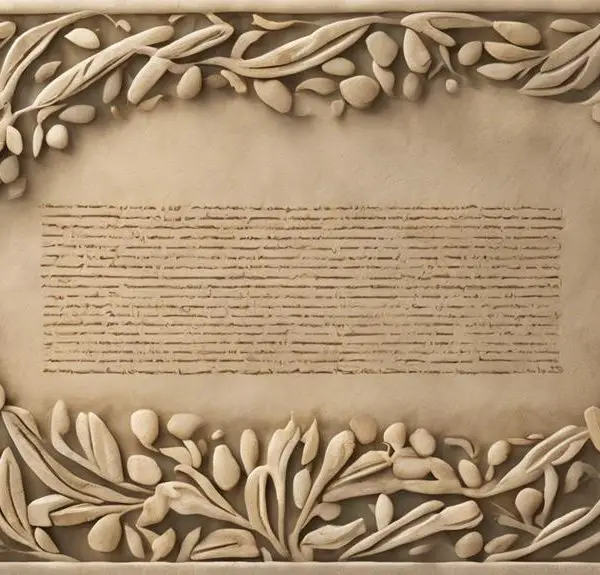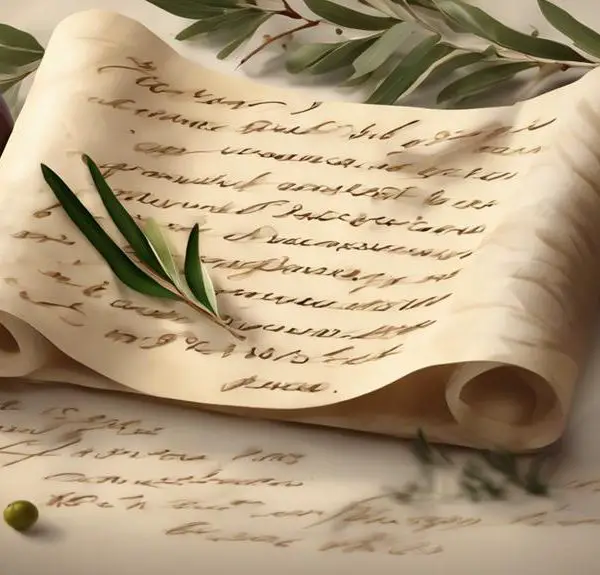Discover the dynamic duos starting with 'D' in the Bible, and uncover the hidden depths of their stories waiting to be explored.

Names of Couples in the Bible
Consider the story of Abraham and Sarah, a testament to faith and the complexities of following divine instruction. You'll find their narrative isn't just a recount of events but a profound exploration of trust, promise, and the human condition. As you contemplate their journey, along with the tales of other biblical couples, you're invited to uncover how these relationships reflect broader themes of love, commitment, and redemption.
Each pair offers a unique lens through which to examine timeless questions about life, making their stories not only relevant but essential for understanding the tapestry of human experience. Why stop at Abraham and Sarah when there's so much more to explore?
Key Takeaways
- Adam and Eve are the first couple, symbolizing the origin of humanity and original sin.
- Abraham and Sarah's story highlights the importance of faith and God's promises in a marriage.
- Isaac and Rebekah's union demonstrates the role of divine intervention in marital relationships.
- Jacob's love for Rachel, despite marrying Leah first, shows love's resilience and the complexities of familial relationships.
Adam and Eve: The First Pair

Adam and Eve, often regarded as the inaugural couple in biblical narratives, set a precedent for human relationships and divine interactions. Residing in the idyllic Garden of Eden, they're tasked with tending to its beauty and bounty, living in harmony with creation. This setting underscores their initial unity with each other and the divine, highlighting a perfect balance disrupted by the introduction of original sin.
The concept of original sin emerges from their choice to eat from the Tree of Knowledge, defying God's sole command. This act not only alters their existence but also sets a foundational narrative for the human condition in theological discourse. You're witnessing the transformation of innocence to awareness, a pivotal shift that affects every aspect of their lives and subsequent human interactions.
Their expulsion from the Garden of Eden signifies a profound loss of innocence and a transition to a life of labor, pain, and mortality. It's a moment that encapsulates the consequences of disobedience and the complex nature of free will. Through this narrative, you're invited to explore themes of temptation, choice, and the enduring impact of decisions, framing a critical examination of human nature and divine expectations.
Abraham and Sarah: A Test of Faith

Moving from the foundational tale of Adam and Eve, we encounter Abraham and Sarah, whose story exemplifies a profound test of faith and obedience within the tapestry of biblical narratives. Their journey, marked by promise and patience, unfolds through several pivotal moments:
- The Promise of a Son: Despite their advanced ages and Sarah's barrenness, God promises Abraham a son. This promise tests their faith, as they must believe in the seemingly impossible.
- Hospitality to Angels: Demonstrating unwavering faith, Abraham and Sarah show extraordinary hospitality to three visitors, unaware they're angels. This act of faith precedes the reaffirmation of God's promise.
- The Birth of Isaac: The culmination of their faith journey is the birth of Isaac, the promised son, symbolizing God's faithfulness and the power of belief.
Analyzing their story, it's evident that Abraham and Sarah's experiences aren't just about the waiting or the fulfillment of a promise. They're about unwavering trust in the face of doubt. Their narrative encourages a reflective examination of one's faith, patience, and the essence of belief in promises beyond human comprehension.
Isaac and Rebekah: A Love Arranged

Transitioning from Abraham and Sarah's narrative of faith, we delve into the story of Isaac and Rebekah, where divine orchestration and human agency converge to arrange a foundational love story within the biblical canon. This pairing showcases the profound interplay between cultural practices and divine intervention, a theme that resonates throughout their narrative.
In their story, cultural practices aren't merely background settings but active elements that shape the course of events. Abraham's servant, following Abraham's instructions, embarks on a quest to find a wife for Isaac, adhering strictly to the cultural norms of their time. This mission, deeply rooted in the familial and social customs of the day, emphasizes the importance of lineage and divine promise in their community.
Divine intervention is unmistakably present, guiding the servant's journey and leading him to Rebekah. The narrative unfolds with a series of providential signs and encounters, underscoring the belief that God's hand was at play in bringing Isaac and Rebekah together. This fusion of human effort and divine guidance illustrates a pivotal moment where faith, tradition, and destiny intertwine, culminating in a marriage that would carry forward Abraham's legacy and the covenantal promises attached to it.
Jacob and Rachel: Love's Labor

Why does the story of Jacob and Rachel captivate us, unfolding as a compelling testament to the complexities of love and the lengths one might go to secure it? The narrative is rich with themes of laborious wait and deceptive love, drawing readers into an ancient world where romantic endeavors were fraught with trials.
- Laborious Wait: Jacob's willingness to work for Laban, Rachel's father, for a total of fourteen years to win her hand in marriage epitomizes the laborious wait. This arduous period serves as a testament to his unwavering commitment and the high value placed on love, albeit challenged by familial deceit.
- Deceptive Love: The deceptive switch of Leah for Rachel on the wedding night introduces an element of betrayal, complicating the love story further. This act of deception by Laban underscores the unpredictable and often treacherous path to fulfilling true love.
- Enduring Affection: Despite the years of deceit and labor, Jacob's affection for Rachel remains unshaken, illustrating that true love can endure the harshest of trials and the most laborious of waits.
In analyzing Jacob and Rachel's story, one observes a narrative rich in lessons about the resilience of love amidst deception and prolonged challenges.
Boaz and Ruth: A Story of Redemption

Turning our attention to the narrative of Boaz and Ruth, we encounter an equally poignant tale that explores themes of loyalty, providence, and the transformative power of love and kindness within the context of personal and communal redemption. This story, deeply rooted in the Moabite lineage of Ruth and the Harvest significance, illuminates the intricate dance between divine providence and human action.
Theme |
Explanation |
|---|---|
Moabite Lineage |
Ruth's foreign origin underscores the inclusivity of divine grace, challenging societal barriers. |
Harvest Significance |
The backdrop of the harvest symbolizes a time of providential abundance, foreshadowing redemption. |
Loyalty |
Ruth's steadfast loyalty to Naomi mirrors the loyalty expected within the covenant community. |
Divine Providence |
The narrative showcases how seemingly random events are orchestrated for a redemptive purpose. |
Love and Kindness |
Boaz's actions towards Ruth highlight the transformative power of love and kindness. |
In analyzing their story, you're invited to consider how their actions, dictated by virtue and faith, not only secure their personal redemption but also contribute to the broader tapestry of redemption within their community. The inclusion of Ruth, a Moabite, into the lineage of David and, ultimately, Jesus, emphasizes the expansive reach of redemption, transcending human-made divisions. Through their journey, the enduring message is clear: redemption is woven through the fabric of love, loyalty, and divine orchestration, inviting all to partake in its unfolding.
Frequently Asked Questions
How Did Cultural and Societal Norms of Their Times Influence the Dynamics and Decision-Making Processes Within These Biblical Couples?
Cultural and societal norms greatly influenced decision-making and dynamics in relationships. Marriage rituals weren't just ceremonies; they were deeply entrenched in societal expectations, dictating roles and behaviors.
Gender expectations further shaped interactions, often limiting women's roles and amplifying men's authority. These norms weren't just background noise; they were pivotal in how individuals navigated their relationships, affecting everything from daily interactions to major life decisions.
In What Ways Did the Relationships of These Couples Impact the Roles and Statuses of Women in Biblical Narratives and in the Societies They Lived In?
Exploring how relationships influenced women's roles, you'll find marriage symbolism and female leadership were pivotal. These unions often depicted women not just as partners but as leaders, challenging societal norms.
Their roles in narratives reflect a complex interplay between personal agency and societal expectations. Consequently, these stories underscored the evolving status of women, subtly advocating for their greater involvement and recognition within their communities and the broader narratives they inhabited.
Are There Any Lesser-Known or Apocryphal Stories Involving These Couples That Shed Additional Light on Their Personalities or Challenges They Faced?
Exploring lesser-known stories, you'll uncover mystical interpretations and apocryphal expansions that reveal more about their characters and trials.
These narratives often go beyond the surface, offering deeper insights into their personas and the obstacles they navigated.
How Have Interpretations of These Couples' Stories Evolved Over Time, Especially in Different Religious Traditions or Denominations?
Through time, modern perceptions of historical narratives have significantly evolved, particularly through interfaith dialogues which foster deeper understanding and varied interpretations. These discussions often reveal the rich tapestry of beliefs and values that different religious traditions or denominations bring to the same stories. They challenge and enrich our understanding, encouraging a more nuanced appreciation of these tales.
This evolution reflects the dynamic nature of faith and the ongoing conversation between past and present.
What Lessons on Conflict Resolution and Communication Can Modern Couples Learn From the Experiences and Trials of These Biblical Pairs?
You can glean vital insights on resolving conflicts and enhancing communication from historical narratives. Embracing forgiveness practices and honing your emotional intelligence are key lessons.
These stories exemplify how understanding and patience in the face of trials forge stronger bonds. By analyzing these dynamics, you'll learn the importance of empathy and open dialogue.
Such strategies not only mitigate conflicts but also deepen relational connections, showcasing timeless principles applicable to modern relationships.
Conclusion
In analyzing these biblical couples, it's evident that their relationships are foundational, not just to their personal narratives but to broader theological and ethical teachings.
From Adam and Eve's pivotal role in human origin to Boaz and Ruth's embodiment of redemption and loyalty, these pairs illuminate the complexity of faith, love, and divine purpose.
Their stories, deeply interwoven with cultural and religious significance, offer rich insights into the human condition and the divine tapestry that frames it.



Sign up